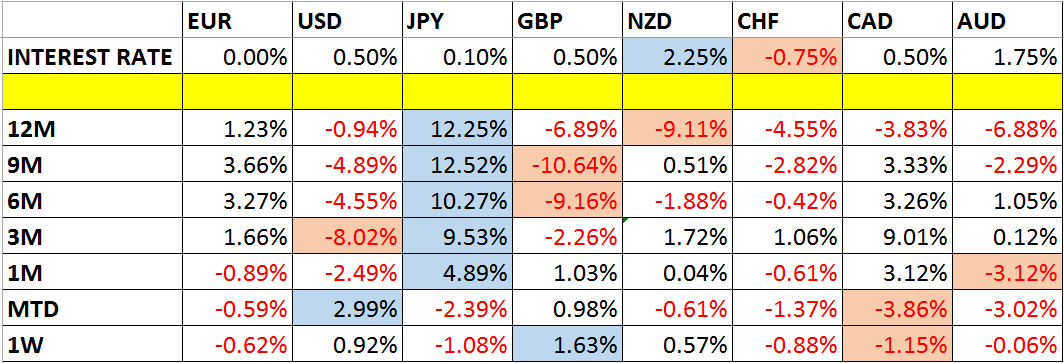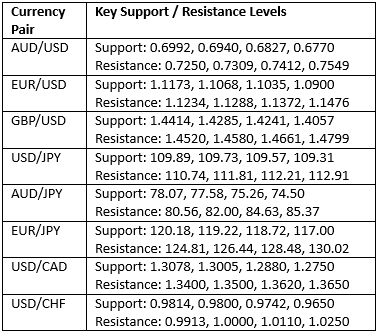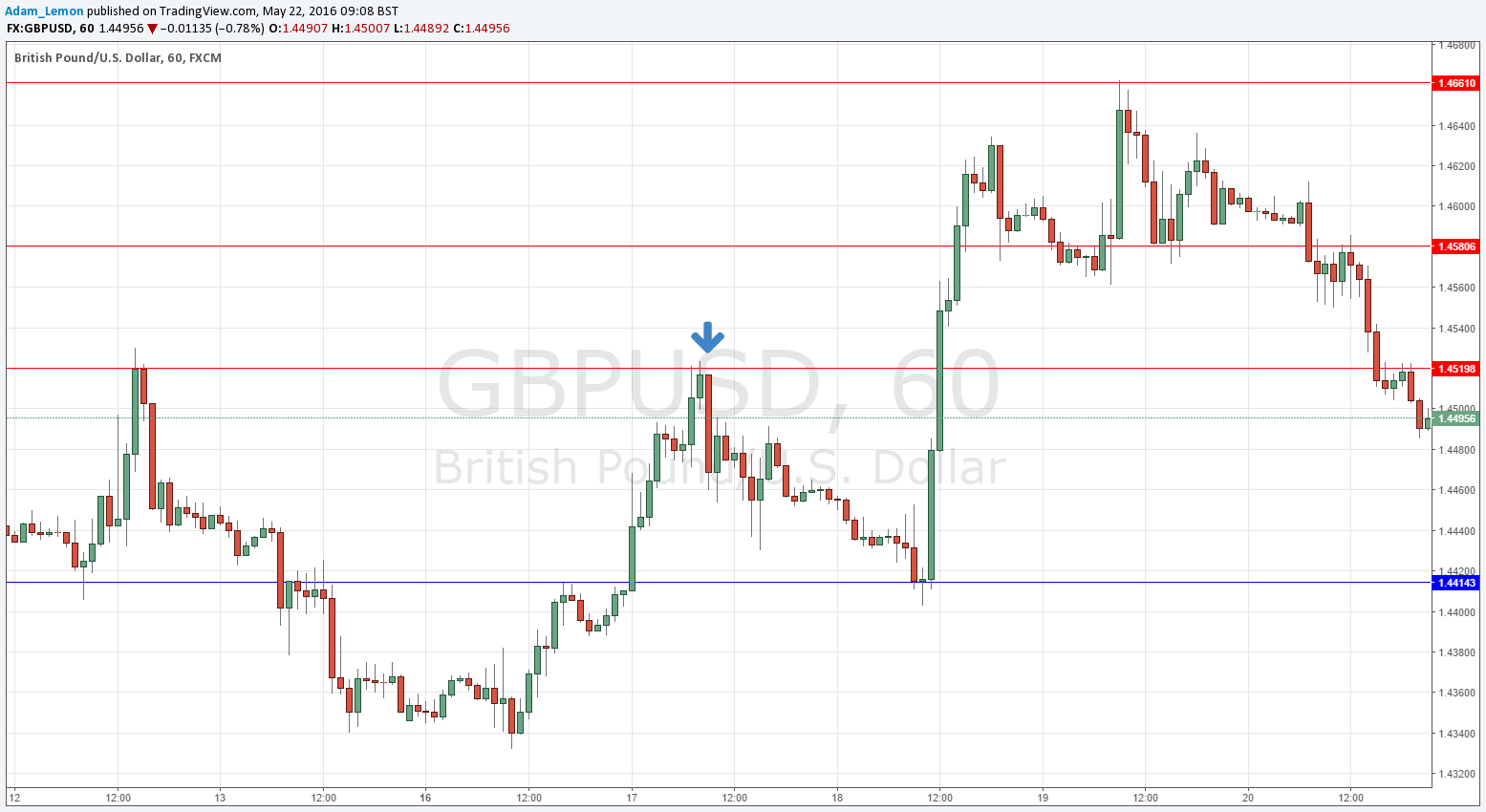This week we’ll begin with our monthly and weekly forecasts of the currency pairs worth watching. The first part of our forecast is based upon our research of the past 11 years of Forex prices, which show that the following methodologies have all produced profitable results:
* Trading the two currencies that are trending the most strongly over the past 3 months.
* Assuming that trends are usually ready to reverse after 12 months.
* Trading against very strong counter-trend movements by currency pairs made during the previous week.
* Buying currencies with high interest rates and selling currencies with low interest rates.
Let’s take a look at the relevant data of currency price changes and interest rates to date, which we compiled using a trade-weighted index of the major global currencies:
Monthly Forecast May 2016
This month, we forecasted that the best movements will be short USD/CAD and USD/JPY, and long EUR/USD. The overall performance so far has been strongly negative:
Weekly Forecast 22nd May 2016
Last week, we made no forecast.
This week, we make no forecast, as the only strong counter-trend movements last week are backed by sharp changes in sentiment.
This week has seen strength in the British Pound and U.S. Dollar, and weakness almost everywhere else, especially in the Japanese Yen and Canadian Dollar.
Volatility was higher than it was last week, with about 55% of the major and minor currency pairs changing in value by less than 1%. Volatility is likely to be a bit less over this coming week.
You can trade our forecasts in a real or demo Forex brokerage account.
Key Support/Resistance Levels for Popular Pairs
At the FX Academy, we teach that trades should be entered and exited at or very close to key support and resistance levels. There are certain key support and resistance levels that should be watched on the more popular currency pairs this week, which might result in either reversals or breakouts:
Let’s see how trading two of these key pairs last week off key support and resistance levels could have worked out:
AUD/USD
We had expected the level at 0.7250 might act as support, as it had acted previously as both support and resistance, and is also a crucial psychological number. Note how these “flipping” levels can work really well. The H1 chart below shows the price opened just below this level at the start of the week, immediately rising above it with a strongly bullish candle as the week’s trading began, followed by an inside candle which immediately broke to the upside. The maximum reward that could have been achieved in this trade was about 100 pips, a reward to risk ratio of approximately 4 to 1 if the stop had been placed just below the low.
GBP/USD
We had expected the level at 1.4520 might act as resistance, as it had acted previously as both support and resistance. Note how these “flipping” levels can work really well. The H1 chart below shows the price made a very strong bearish engulfing candle the first time it touched this level just after London opened, breaking to the downside immediately. The maximum reward that could have been achieved however was only a reward to risk ratio of approximately 1 to 1 if the stop had been placed just above the swing high. This is because the initial candle was very large. With such very large candles, it can make better trading sense to place the stop more tightly. For example, here, if the stop had been placed just a pip or two above the key round number of 1.4500, it would have given a slightly better reward to risk ratio.
You can trade our forecasts in a real or demo Forex brokerage account to test the strategies and strengthen your self-confidence before investing real funds.





